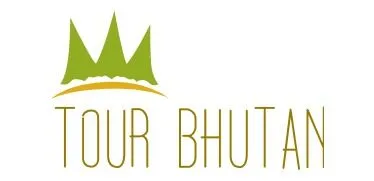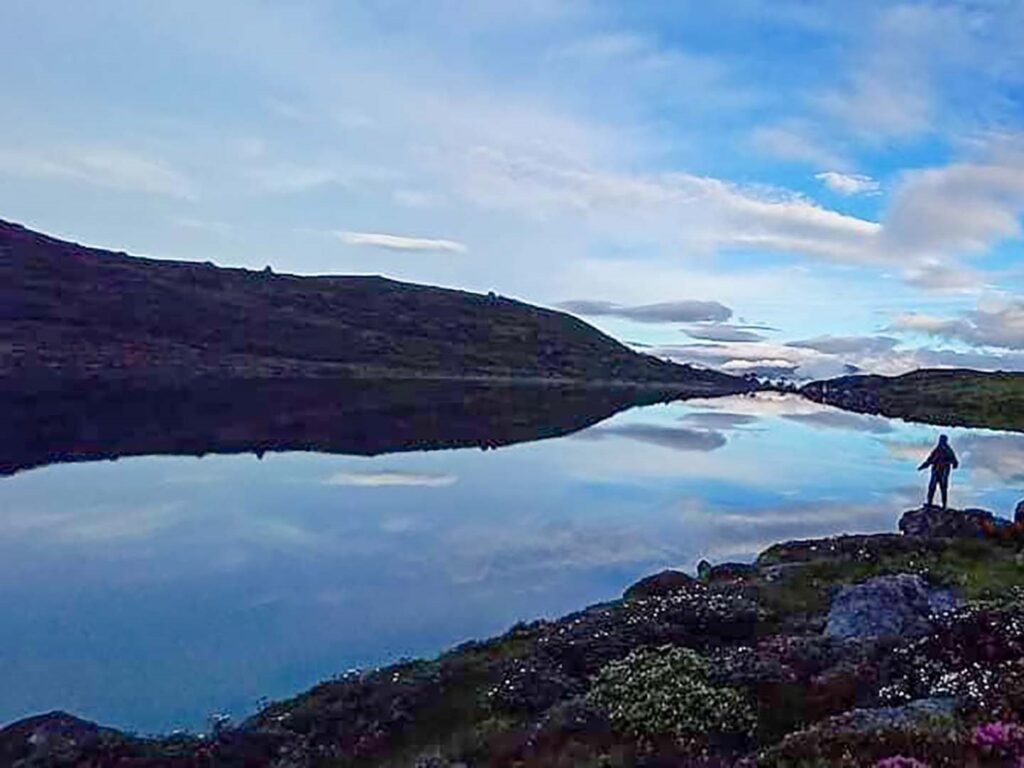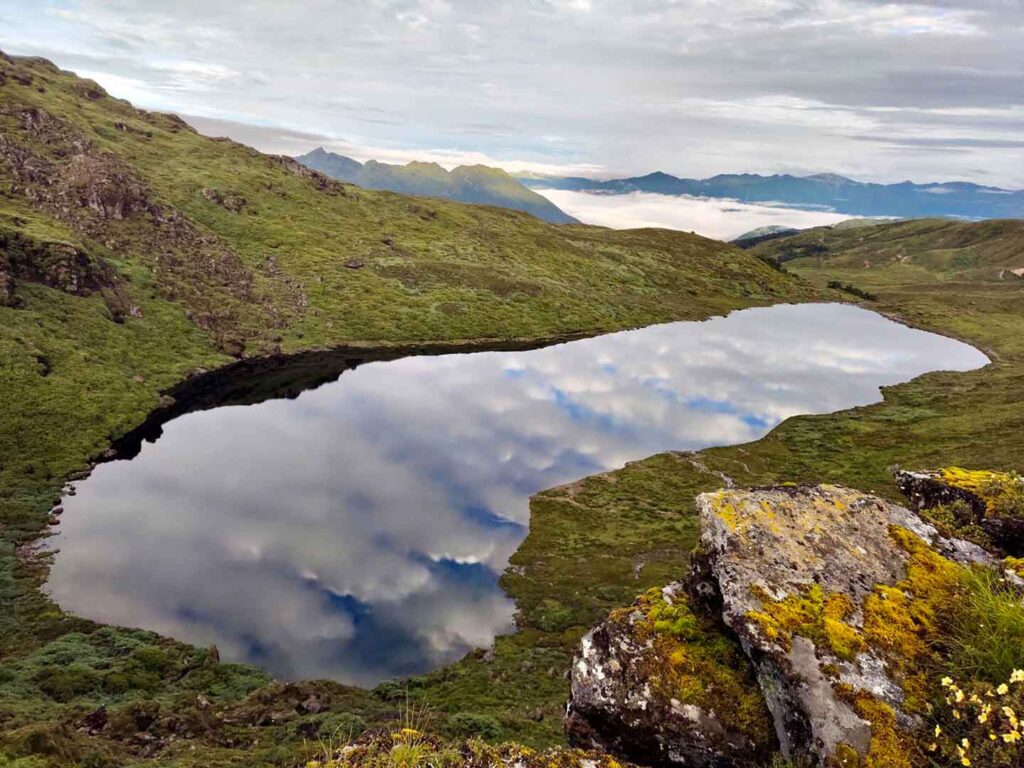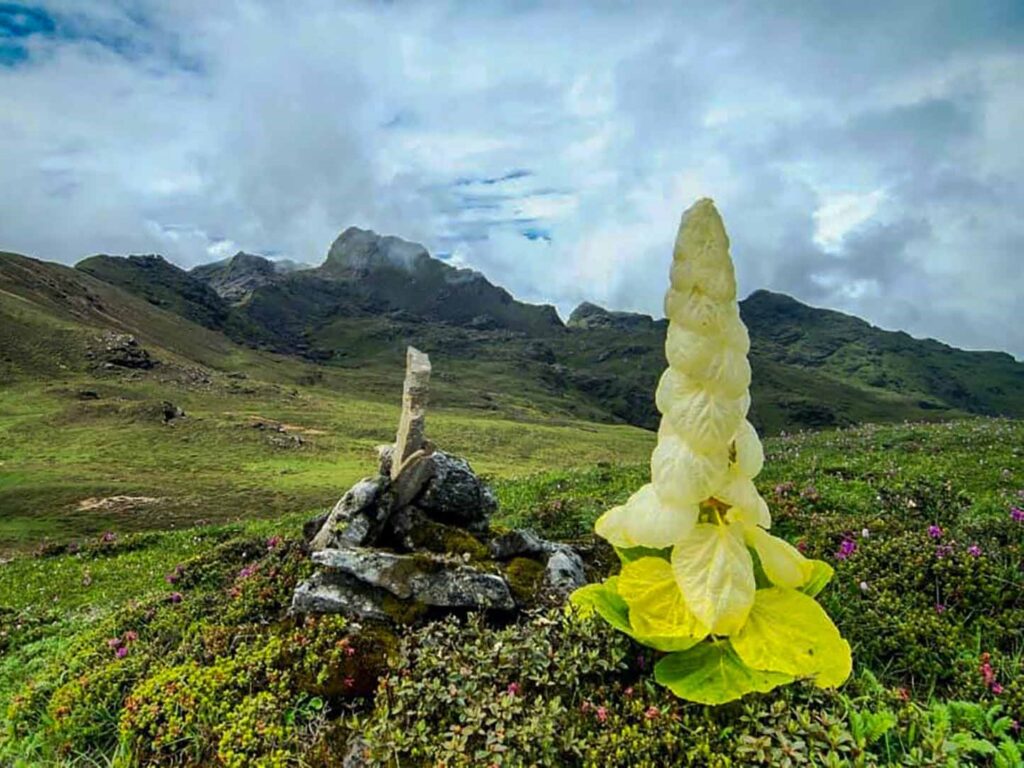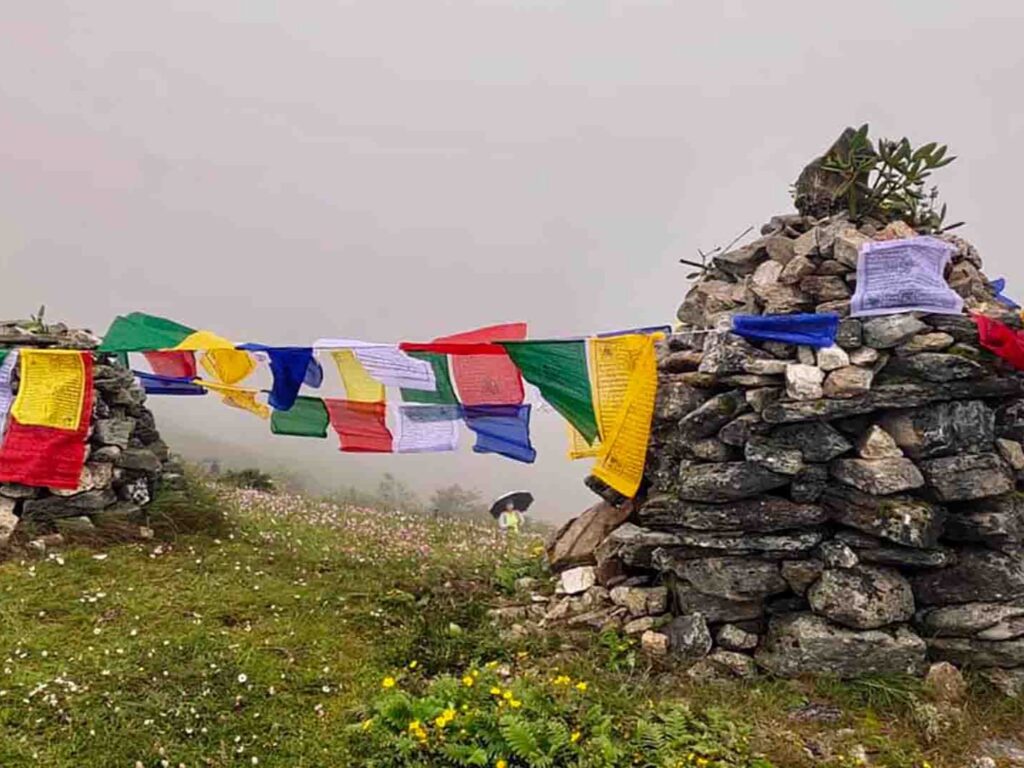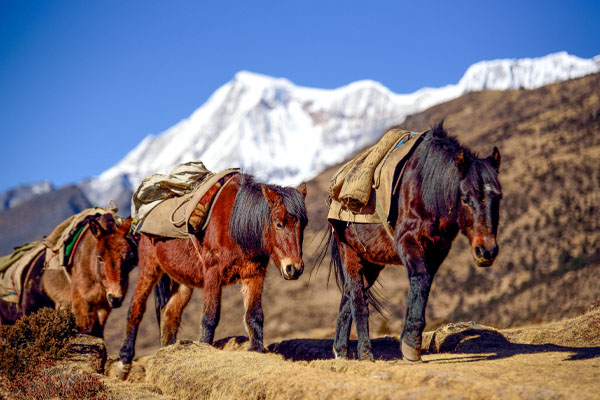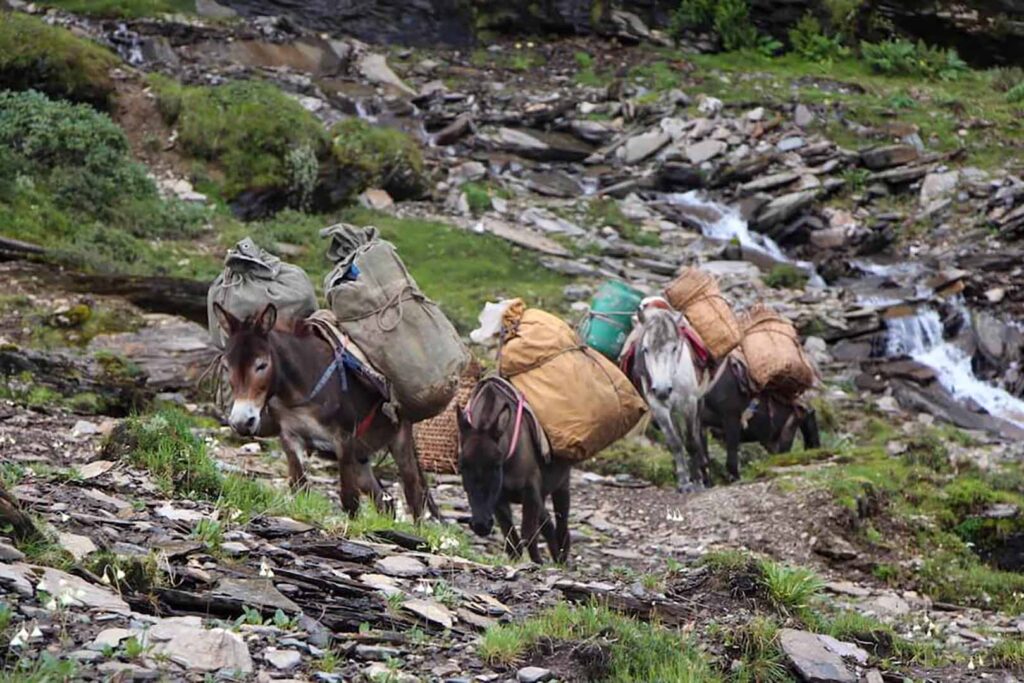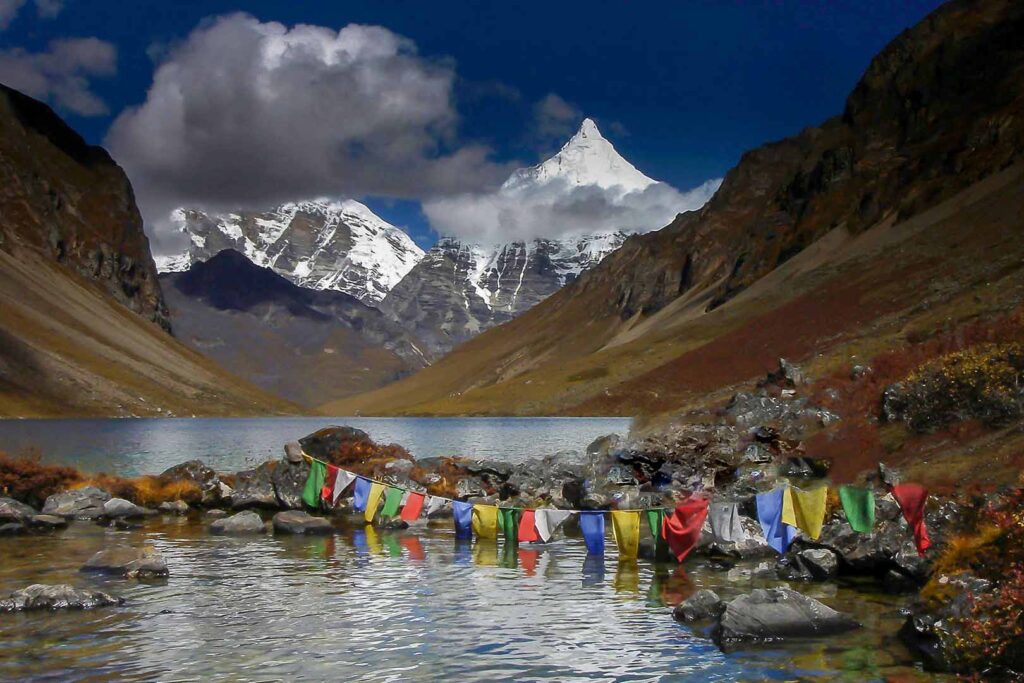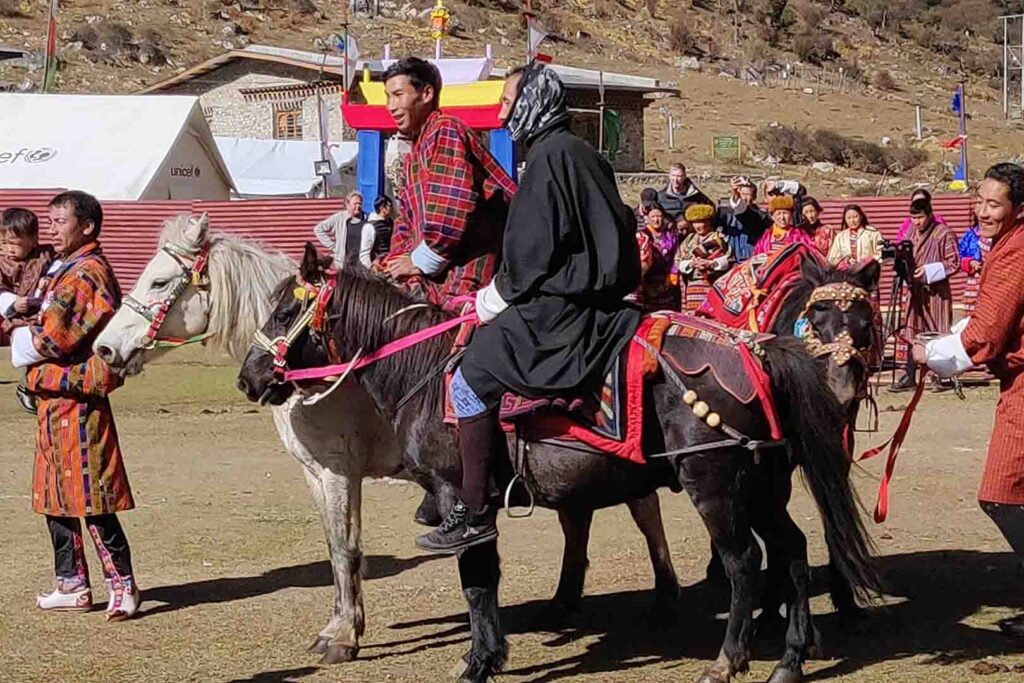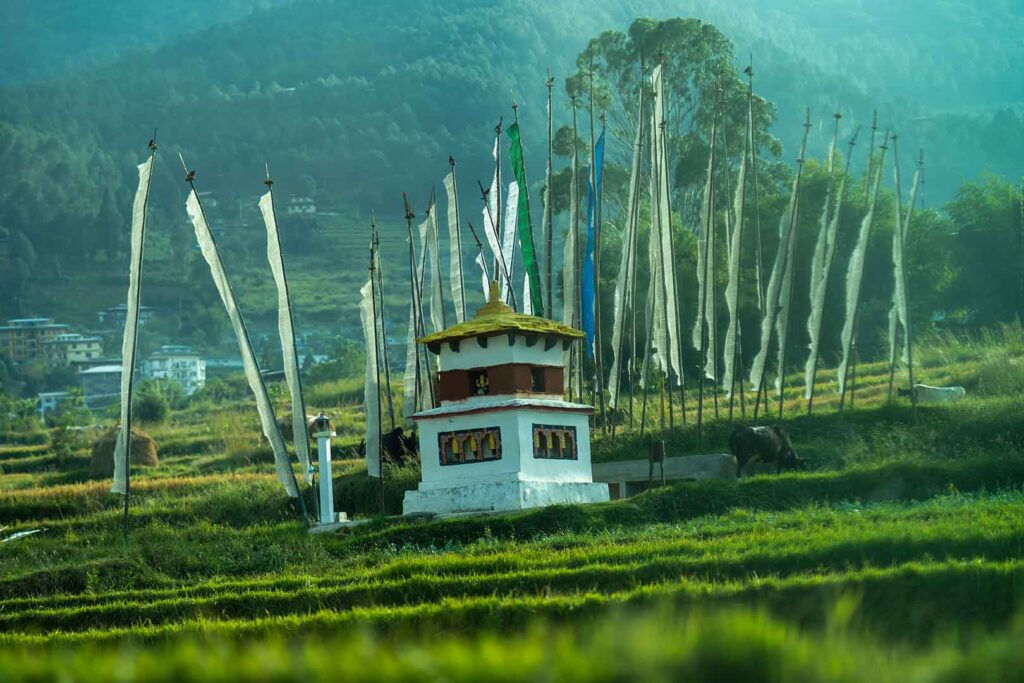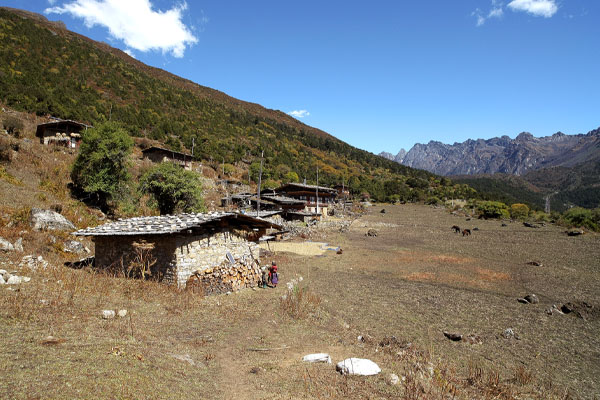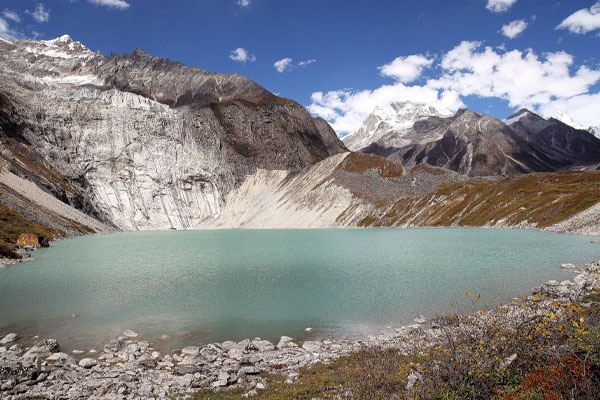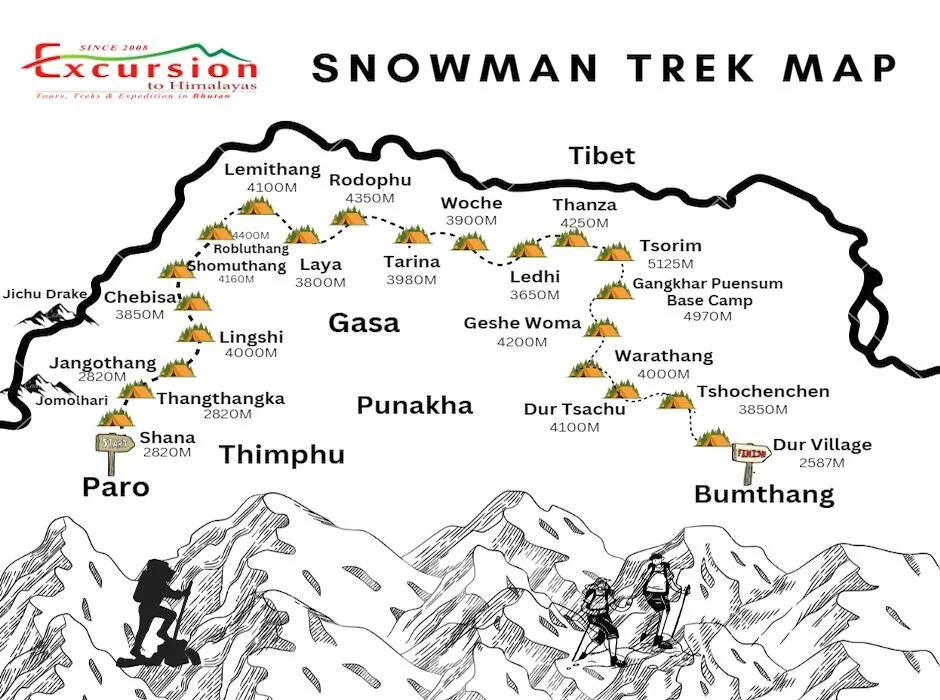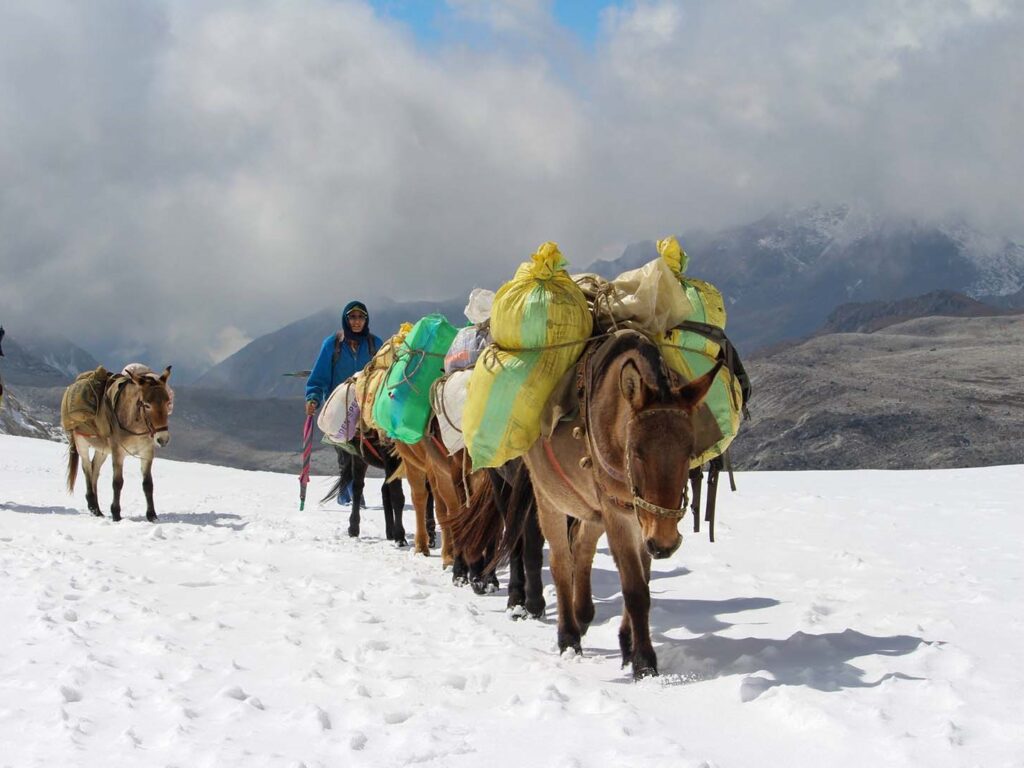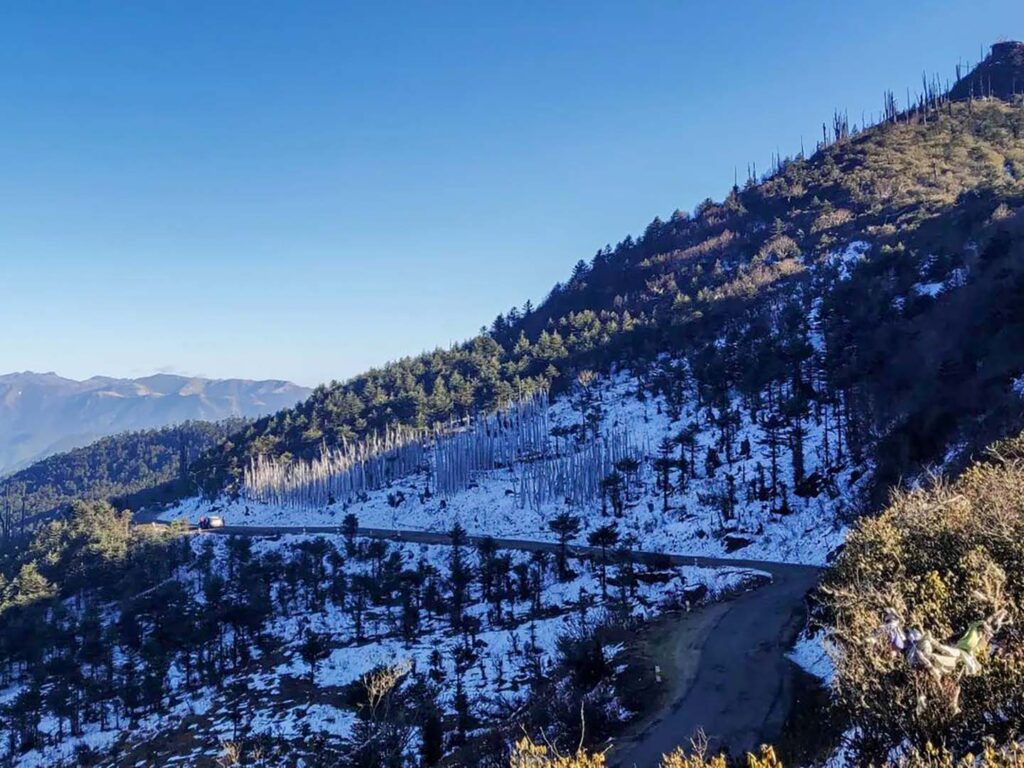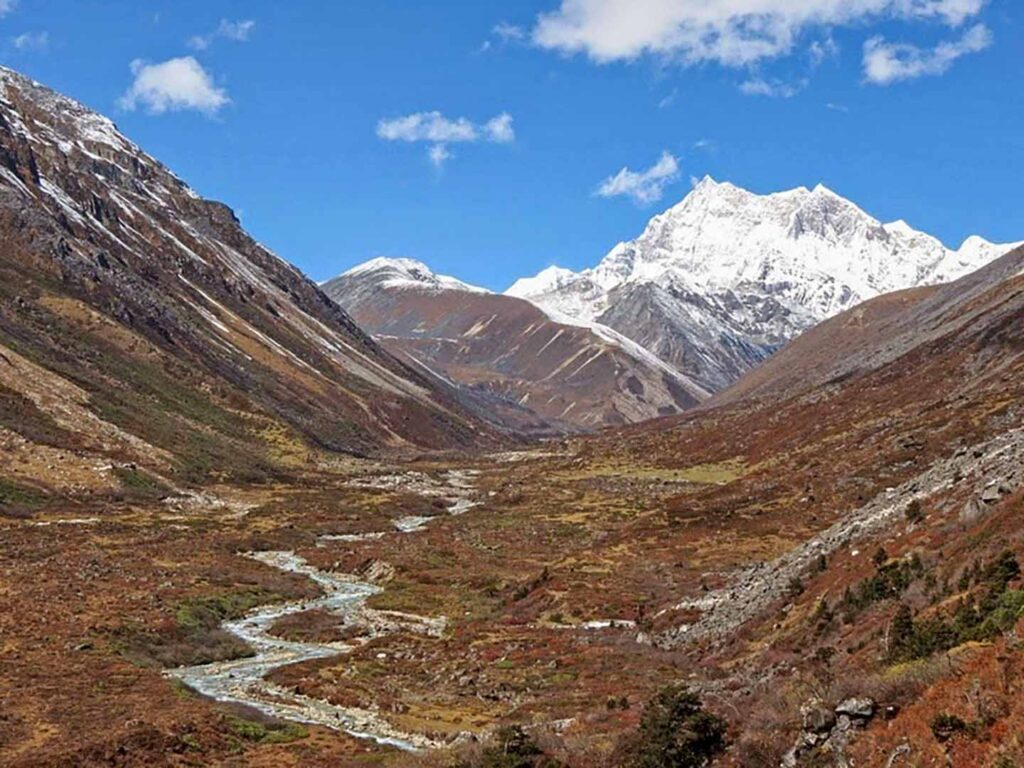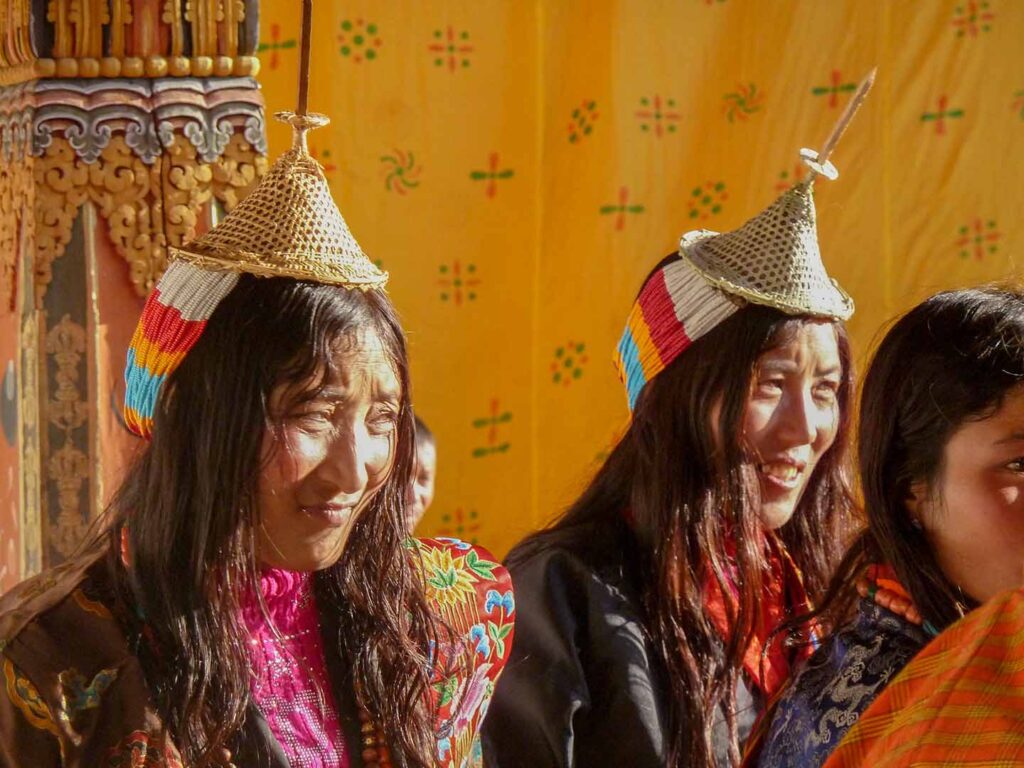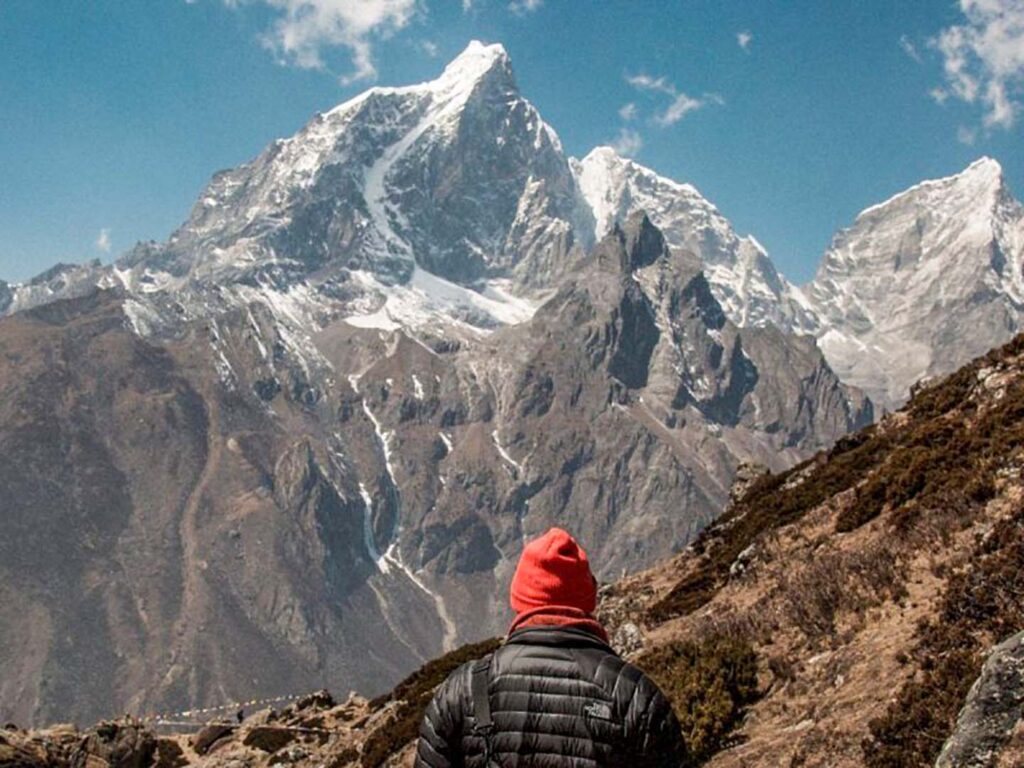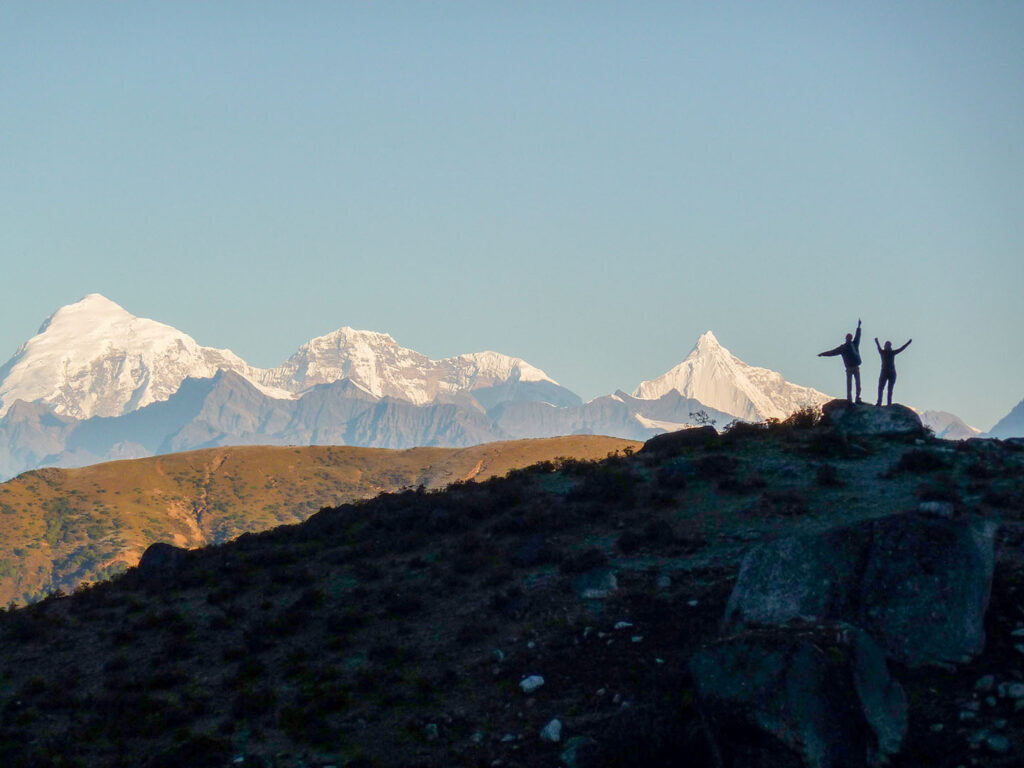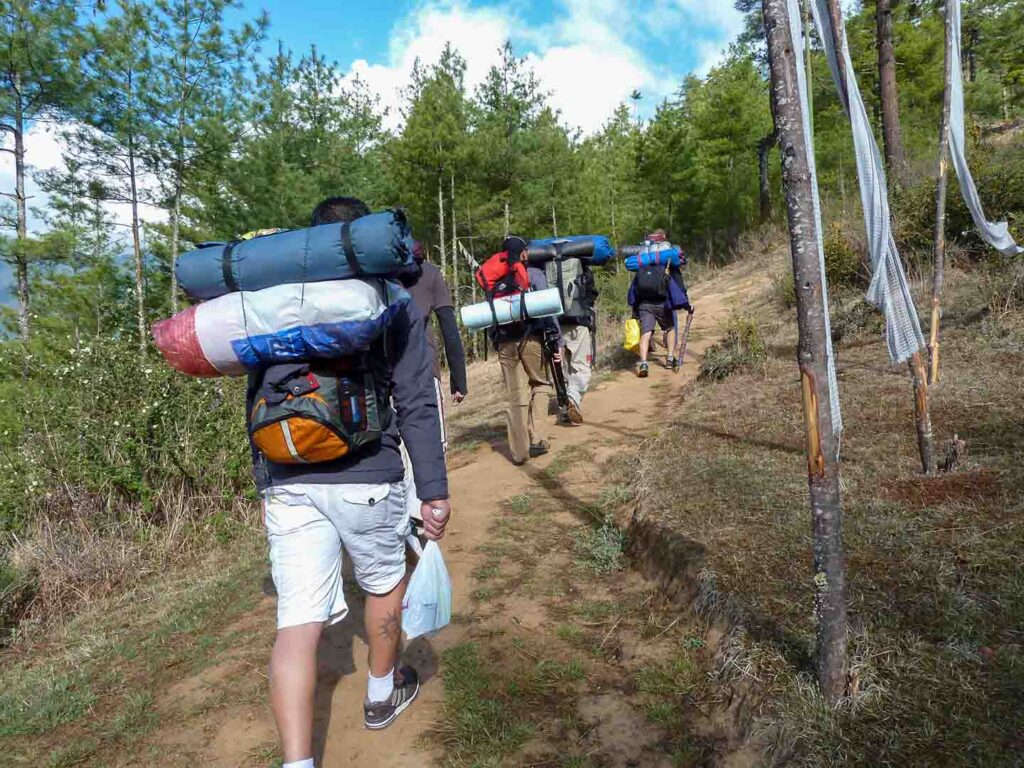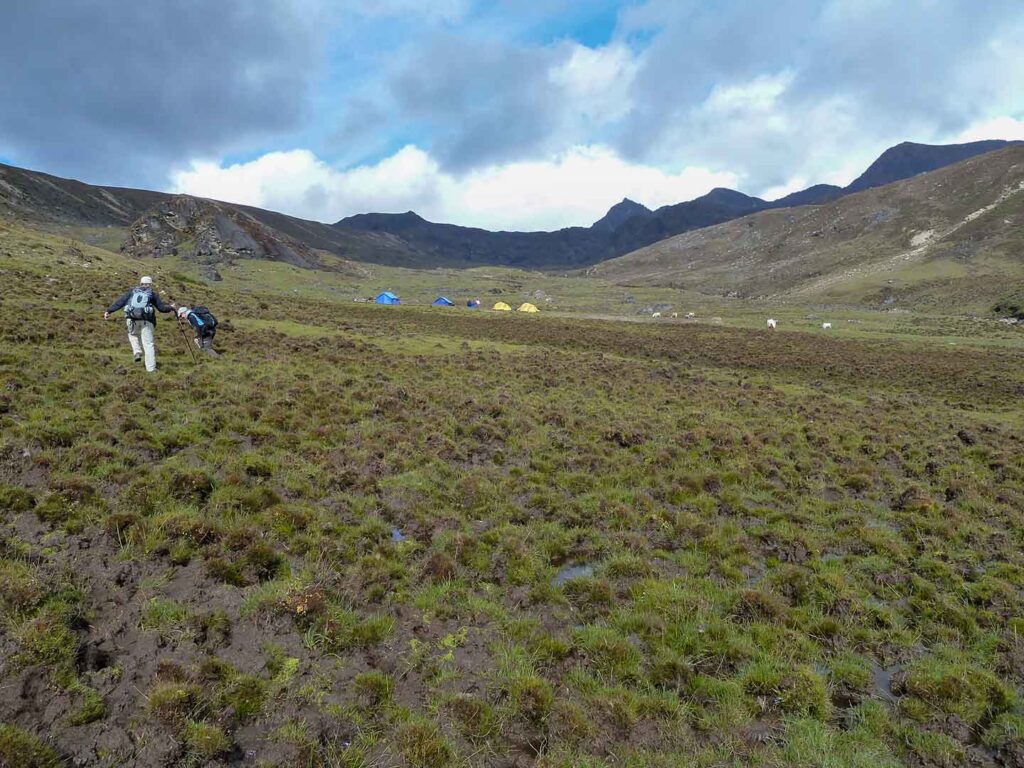Nub Tsho Na Pata trek in Haa is a Part of the Jigme Khesar Strict Nature Reserve, the only strict nature reserve in the country. Home of the snow leopards. Abode of Ap Chundu. Tough, treacherous paths, climbs that take your breath away and knee-crunching descents on the last day. But worth every ounce of strength and determination. The highest point on the trek is around 4480 Mts above sea level. This is one of the recently introduced Trek in Bhutan.
Nub Tshonapata Trek in Haa Highlight
- Haa Valley: Start your trek in the picturesque Haa Valley, known for its tranquil beauty, traditional villages, and verdant meadows.
- Alpine Views: Trek through diverse terrains, including lush forests, alpine meadows, and high mountain passes, offering stunning views of the surrounding peaks and valleys.
- Sacred Lake: The highlight of the trek is reaching Nub Tshonapata, a sacred lake nestled in the mountains. The serene and crystal-clear waters of the lake are surrounded by untouched natural beauty, making it a perfect spot for reflection and photography.
- Flora and Fauna: The trek takes you through forests of rhododendron, pine, and juniper, home to various species of birds and wildlife. The diverse flora and fauna add to the trek’s enchanting experience.
Nub Tshonapata Trek in Haa Details
- Duration: 5-6 days
- Distance: Approximately 40 kilometers
- Best Time to Trek: Spring (March to May) and autumn (September to November) for clear skies, mild temperatures, and the most favourable trekking conditions.
- Start and End Points: The trek typically starts and ends in the Haa Valley, providing easy access to explore more of Bhutan’s cultural and natural attractions.
Nubtshonapata Trek Cost
- Single Pax Cost USD 2500 Per Person
- 2 Pax Group Coast USD 2100 Per Person
Similar Tour and Sightseeing in Bhutan
Itinerary
Arrive at Paro airport and drive to Haa. The drive takes about 2 hours from the airport to Haa valley. On the way, you can stop at Chelela Pass(4200m). You can see the best view of Haa valley from the Pass. If you happen to arrive in the spring season Chele La pass is filled with spring wildflowers. Upon arrival at Haa valley check into the hotel and take rest.
Haa is also known as “the hidden Land Rice valley” Haa major feature is its narrow north-southvalley. Its new Dzong is built in 1915 near older one which is distroyed by fire. Haa is ancient route for trade with Bhutanese with Yatung and Chumbi valley in Tibet. Walk around the haa valley and acclamatise before we begin the trek.
Distance: 22Km
Walking Time: 7 Hours
Campsite altitude: 2700m
Ascent: 220m
Descent: 55m
After early breakfast, the trek begins from Haa to Womji.
Distance: 22Km
Walking Time: 8 Hours
Campsite Altitude: 3700M
Ascent: 650m
The trek begins from Womji to tshona. Today after breakfast, you will start climbing steeply through juniper and rhododendron forest to the Gochhila pass at 4350m, providing spectacular views of the whole Tshejala range. You will pass through several yak herders’ camps and in spring the trail will be carpeted with wild flowers. You will then walk towards Tshejala pass crossing the ancient trade route from Haa to Tibet.
Distance:8 Km
Walking Time: 5 Hours
Campsite Altitude: 3940M
Today we shall take the previous walk. This morning you will retrace as far as to Gochhila Pass before branching off on a different route over a ridge to Lake Tshojo at 3780m. You will have a picnic lunch on the lake shore. After lunch, you will descend to the camp in a yak meadow at Tshojo.
Distance: 18Km
Walking Time: 6 Hours
Ascent: 650m
Descent: 650m
Your trail descends gradually through juniper and rhododendron forests until you reach the Talila Pass, which you will Cross to re-enter the Haa Valley. Your trek ends here and your transport will be waiting here to take you to Paro. Overnight hotel in Paro
Drive to Paro via Chelela Pass. Visit Tshering Farmhouse and enjoy the Hotstone bath at Paro. Paro is one of the most beautiful well-preserved valleys and the country’s only international airport. Its beauty and plane valley and iconic Tiger Nest temple make the place one of the most iconic places to visit.
Facts about Paro: Tiger Nest Temple is located in Paro.
Drive to Airport and See off.
